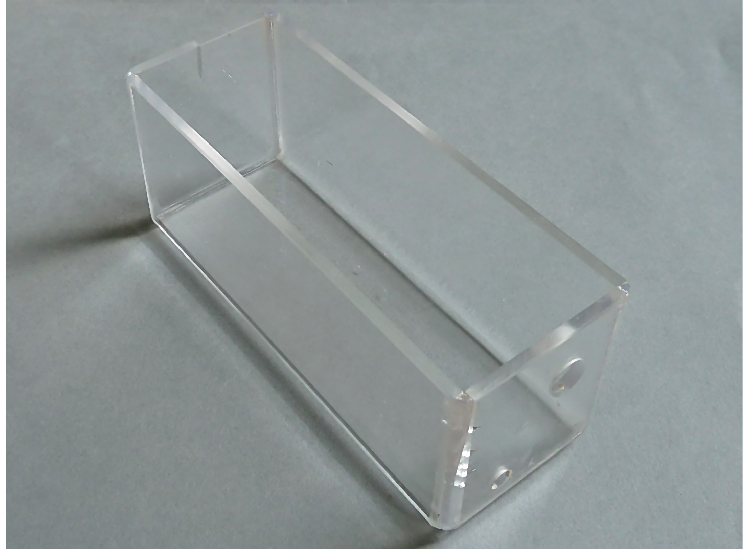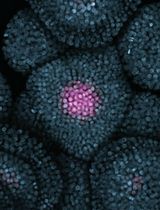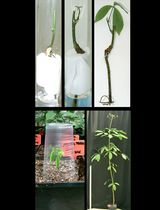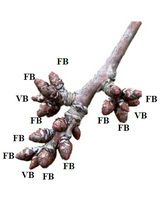- EN - English
- CN - 中文
Non-invasive Protocol for Kinematic Monitoring of Root Growth under Infrared Light
红外线下根生长运动学的无创监测实验方案
(*contributed equally to this work) 发布: 2017年07月20日第7卷第14期 DOI: 10.21769/BioProtoc.2390 浏览次数: 9488
评审: Igor Cesarino Anonymous reviewer(s)
Abstract
Phenotyping the dynamics of root responses to environmental cues is necessary to understand plant acclimation to their environment. Continuous monitoring of root growth is challenging because roots normally grow belowground and are very sensitive to their growth environment. This protocol combines infrared imaging with hydroponic cultivation for kinematic analyses. It allows continuous imaging at fine spatiotemporal resolution and disturbs roots minimally. Examples are provided of how the procedure and materials can be adapted for 3D monitoring and of how environmental stress may be manipulated for experimental purposes.
Keywords: Hydroponics (水培)Background
The use of kinematic analyses for the monitoring of growth and tropisms in plants dates back to the end of the 19th century, with early studies from Julius von Sachs and Whilhelm Pfeffer. The widespread use of photography during the 20th century led to easier and continuous monitoring through ‘streak photography’ (List, 1969; Erickson and Silk, 1980). In the 90s, new digital cameras and informatics tools enabled the development of automatic tracking algorithms used for particle image velocimetry. RootFlowRT (Van der Weele et al., 2003), Kineroot (Basu et al., 2007), RootTrace (French et al., 2009), GrowthTracer (Iwamoto et al., 2013) and Kymorod (Bastien et al., 2016) are among many recent examples of software dedicated to the monitoring of root growth. However, all particle image velocimetry methods rely on the use of identifiable image texture patterns in each successive picture. Historically, these patterns were marked on the root using ink or graphite particles (see Sharp et al., 1988 and Merret et al., 2010 for examples). Two difficulties arise from this approach: Firstly, the markings spread during organ (root) growth, inducing loss of resolution after a few hours. Secondly, the physical marking process may stress the organ due to some combination of exposure to small forces, to light or to temperature changes, or to slight drying of the organ surface. In roots such handling effects may cause temporary slowing of growth for a period of minutes to hours. The use of infrared light (840-850 nm) has the double benefit of not influencing root growth, whilst also generating image texture patterns readily tracked using particle image velocimetry.
Materials and Reagents
- Clear flexible tubing (VWR, catalog number: 228-0708 )
- Plastic sealing tape (Terostat VII, Teroson) (Rubans de Normandie, catalog number: 7TE )
- Growing roots of hydroponically-grown plants. Adventitious roots grow on poplar woody cuttings partially immersed in Hoagland half strength nutrient solution (Sigma-Aldrich, catalog number: H2395 )
Note: The present protocol was initially designed for monitoring the growth of a plagiotropic poplar root (Bizet et al., 2015). The protocol is adaptable for any plant species that tolerates hydroponic or in vitro cultivation (see step D3).
Equipment
- Transparent Plexiglass® growth monitoring chamber (specially built, size 12 cm long x 5 cm large x 6 cm height), with holes on one side for nutrient solution inflow and outflow (Figure 1)

Figure 1. Custom made transparent Plexiglass® growth monitoring chamber - Water pump (e.g., a small aquarium pump, for instance, Newa, model: NJ600 , aquarium shop)
- Temperature-controlled dark room (range 21-23 °C)
Note: The whole system requires about 1 m2 of laboratory working space. - Air pump (e.g., an aquarium pump with airstone, for instance JBL, model: Prosilent a300 , aquarium shop)
- Stone diffuser (e.g., JBL, model: Prosilent Aeras Micro S2 , aquarium shop)
- Small plastic reservoir tank (buffer tank, few litres capacity, size 12 x 20 x 40 cm3)
Note: A plastic bucket would suit. - Modified digital camera (see Procedure A, for how to remove the infrared filter)
Note: Most reflex camera should work fine as long as it is possible to do infrared conversion and to computer-control them using manufacturer’s software or free software such as Digicamcontrol (list of supported cameras: http://digicamcontrol.com/cameras). Light sensitivity and captor size should also be considered for best image quality. - Infrared lamp (840-850 nm) (Pearl, catalog number: KT4243-907 )
- Extension tube (Kenko, AF 12/20/36 mm for Nikon)
- Optical rail equipped with a translation stage (Edmund Optics, catalog number: 59-263 )
- Knuckle with knob and thread adaptor (Edmund Optics, catalog numbers: 53-887 and 58-988 )
- Macro objective (Nikkor 60/2.8 D ASF)
Software
- Software for image analysis (e.g., Kineroot from Basu et al., 2007)
- Fiji (https://fiji.sc)
- Rawtherapee (http://rawtherapee.com)
- Digicamcontrol (http://digicamcontrol.com)
Procedure
文章信息
版权信息
© 2017 The Authors; exclusive licensee Bio-protocol LLC.
如何引用
Bizet, F., Dupuy, L. X., Bengough, A. G., Peaucelle, A., Hummel, I. and Bogeat-Triboulot, M. (2017). Non-invasive Protocol for Kinematic Monitoring of Root Growth under Infrared Light. Bio-protocol 7(14): e2390. DOI: 10.21769/BioProtoc.2390.
分类
植物科学 > 植物发育生物学 > 综合
植物科学 > 植物生理学 > 植物生长
您对这篇实验方法有问题吗?
在此处发布您的问题,我们将邀请本文作者来回答。同时,我们会将您的问题发布到Bio-protocol Exchange,以便寻求社区成员的帮助。
Share
Bluesky
X
Copy link













